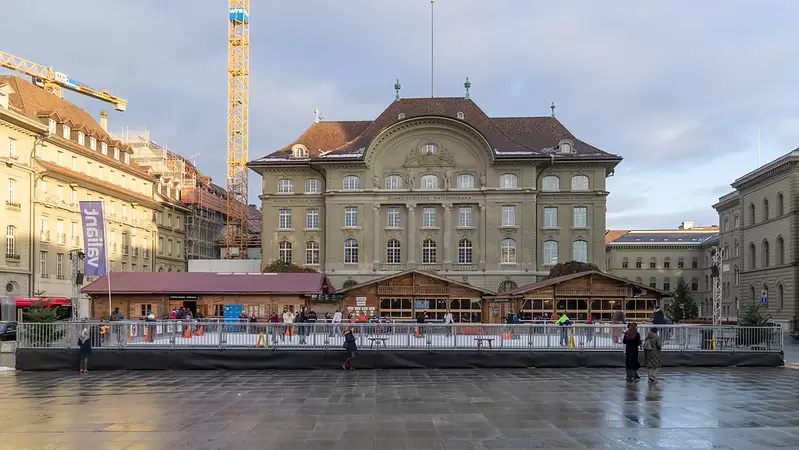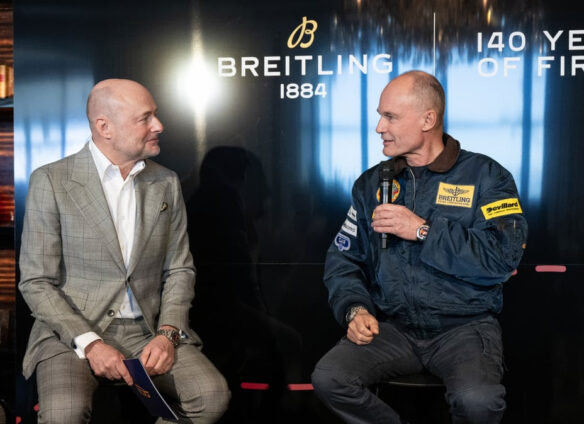Tokyo (SCCIJ) – Winter time is ice skating time. But frozen water is not needed anymore. A Swiss company builds rinks that can be operated without water and even electricity. Now, the Swiss government installed such an “ice” rink in Bern.

A sustainable Glice synthetic ice rink at historic Bundesplatz in Bern (© Glice).
Ice skating, eco style
For the last two months, the center of the Swiss capital offered ice skaters the opportunity of a lifetime – they could experience a waterless zero-energy skating rink put on the historic Bundesplatz.
The Swiss-designed synthetic ice rink manufacturer Glice based in Lucerne was selected over refrigerated ice because of its unique, sustainable skating surface. Glice rinks don’t use water, electricity, resurfacing, or noisy equipment. They are nearly silent, providing a pleasurable, low-decibel experience to patrons and residents.
Compared to a conventional ice rink, the 468 square meters of Glice surface in Bern saved 23,400 liters of water, the monthly energy consumption of over 450 average households, and 12 tons of CO2 emissions over the two months of this event. “Glice looks like ice, glides like ice, but isn’t ice,” said Co-Founder and CEO, Viktor Meier.
Plastic and lubricant
Synthetic ice is made from high-density polyethylene plastic specifically engineered for ice skating. The material is molded into tiles and treated, resulting in a surface that simulates the sliding properties of traditional ice. Through friction, the blades cut open molecules, which release a lubricant – the glide effect is only 2 percent slower than conventional ice.
Glice synthetic rinks are specifically designed to allow your skates to lightly scratch open the surface, thereby releasing additional gliding lubrication. Imagine a plastic cutting board with little hairline scratches left over the surface from using a sharp knife. This is similar to what you’ll see on synthetic ice after it’s been used. Professional and competitive skaters across the globe are now choosing Glice for their training because of its ice-like feel.
Successful start-up
The founders of Glice were appalled by the enormous amounts of energy and water needed for the production of conventional ice. CEO Meier saw a BBC documentary about the ice hockey player Toni Vera, who was developing ecological ice. Together in 2012, they founded Glice to enable endless skating all year long and in all weather conditions.
They knew that only a truly revolutionary, synthetic ice would convince top hockey players and figure skaters. Hence, a team of athletes and scientists was formed to achieve this ambitious goal. The result was Glice, which soon became the world’s top-selling synthetic ice product. Since 2012, the Swiss company has installed thousands of synthetic rinks in over 90 countries, among them in Japan.
Text: SCCIJ with material of Glice





























